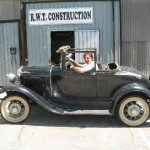Home Remodeling: How to Have Your Own Home Recording Studio
Got a spare room in your home? It can be remodeled into so much more than a guest room or a hobby/craft room. Across Southern California, home recording studios are springing up everywhere.
If you’ve always enjoyed recording and audio engineering work, you know that creating a music studio involves much more than just buying the equipment.
With a bunch of equipment and no real planning, a room will be messy and cramped. That’s likely not the professional image you want.
How about starting with an expert contractor who can do everything – from designing your home recording studio to building it to installing equipment – and provide you with a turnkey product?
Choosing the Studio Room
When choosing a room to redesign and remodel into a recording studio, there a few things to take into consideration such as isolation. It is important that the room is in a quiet area of your home to minimize any interference from outside noise. You also need a room where you can clear out pretty much everything that is currently in there. You can’t have clutter and you need the room to be “cut off” from interference.
You may not have much choice about which room to use for your home recording studio. But if it is at all possible, the basement is an ideal location. It’s a low traffic area and it can be soundproofed much more easily. It also usually operates on different electrical circuits from the higher traffic areas. Even partitioning off part of the basement works well.
But a bedroom can be a good choice, also. A professional contractor with experience and know-how will design it and construct it just right for your needs.
Access to Circuitry and Ducting
Before you start thinking about the acoustic panels and foam dampeners, you need to know if the electrical circuitry can handle all the recording equipment you will have plugged in. Furthermore, all that equipment gives off heat. When combined with the isolation of the room, you need to be sure cool air can be pumped in to maintain a constant temperature. And quietly, so air conditioning noise is not picked up by microphones.
This is where the investment in the experts pays off. They take all these things into consideration and check for you.
Control Room
Your control room needs to be adjacent to the recording studio, but still separate. This is where you need to think about design plans, electrical circuitry and also installing a large, soundproofed window between the control room and studio. Again, an expert contractor with experience in both home remodeling, designing and building recording studios is invaluable.
Soundproofing and Acoustics
Once your room’s basic shape is remodeled into a recording and control area, it’s time for the acoustic treatment. First, how do you make the room soundproof? That includes the walls, the doors, the windows, the floor and the ceiling.
Do you know what kind of acoustic panels are most suitable for the shape and size of the room? Do you know what sound absorbing materials are best for the size and shape and for your intended needs? Not all panels and foam are equal.
Other Details
How about some built-in storage? You’ll need to keep your equipment organized and always be able to find it when you need it. Some storage may need to be designed to fit your specialized items. Then it should be labeled. Clutter is a bad and dangerous thing in a studio.
Why Do It Yourself When a Turnkey Solution is Available?
From conceptual design, to plans, to the remodeling construction, to adding the acoustic treatment, to setting up the equipment, to having everything ready to go, doing it yourself can be a long job. Save yourself time and headaches. Get a turnkey solution and start recording sooner in your own home studio.
 “Romney Tripp started construction in 1977 and formed RWT Design & Construction in 1992, eventually setting up the shop in Burbank. From the mid 1980’s Romney has been working on building recording studios as well as…” Read more.
“Romney Tripp started construction in 1977 and formed RWT Design & Construction in 1992, eventually setting up the shop in Burbank. From the mid 1980’s Romney has been working on building recording studios as well as…” Read more.
Creative Commons Attribution: Permission is granted to repost this article in its entirety with credit to RWT Design & Construction.


No Comments
Sorry, the comment form is closed at this time.